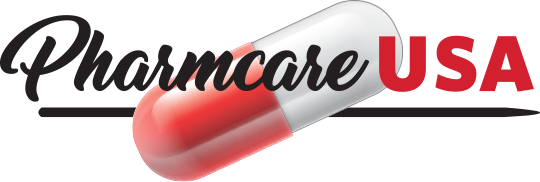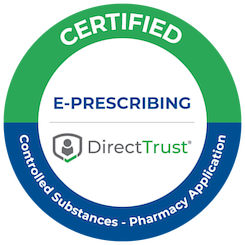Understanding the Importance of Medication Cost Efficiency in Nursing Homes
Medication cost efficiency in nursing homes is a significant aspect of the healthcare industry that often gets overlooked. The growing population of elderly individuals who require long-term care in these facilities necessitates an efficient and cost-effective approach to medication management. The financial burden that medication costs can place on nursing homes and their residents is substantial, often leading to compromised care and financial instability for the facility.
The cost implications of medication in nursing homes are particularly pronounced due to the high prevalence of chronic illnesses among residents that require ongoing prescription medication. Therefore, developing strategies to optimize medication cost efficiency is essential in ensuring the viability and sustainability of these vital institutions. Moreover, it also plays a crucial role in ensuring that residents receive the necessary care without compromising on quality due to financial constraints.
Medication cost efficiency in nursing homes is not simply about reducing costs, but rather about implementing strategies that ensure maximum value for every dollar spent. It involves a comprehensive approach that includes appropriate prescribing, minimizing waste, efficient medication management, and cost-containment strategies, among others.
The Problem of Polypharmacy and Its Cost Implications in Long Term Care Facilities
Polypharmacy, the simultaneous use of multiple medications by a patient, is a common problem in long-term care facilities such as nursing homes. While some situations necessitate polypharmacy, it often leads to increased medication costs, adverse drug reactions, and medication errors. The cost implications of polypharmacy in these facilities are significant, not just in terms of the direct costs of the medications, but also the indirect costs associated with managing adverse drug reactions and medication errors.
The issue of polypharmacy in nursing homes extends beyond the financial implications. It also has a direct impact on the quality of life of residents, as the overuse or inappropriate use of medications can lead to negative health outcomes. Additionally, the complexity of managing multiple medications can lead to confusion and errors, further exacerbating the problem.
Addressing the issue of polypharmacy requires a comprehensive approach that includes regular medication reviews, appropriate prescribing practices, and patient education. Moreover, it involves fostering a culture of medication cost efficiency within the facility, where every stakeholder understands the importance of cost control and is committed to implementing strategies to achieve it.
The Five-Step Approach to Medication Cost Efficiency
Med Pass Simplification
Med pass simplification is the first step towards medication cost efficiency in nursing homes. It involves streamlining the process of administering medications to residents to reduce the chances of errors, enhance efficiency, and ultimately, lower costs. Med pass simplification often involves the use of technologies such as electronic medical records and automated dispensing machines. These technologies enable accurate tracking of medication administration, thereby minimizing errors and enhancing cost control.
Minimizing Waste
The second step is minimizing waste, which involves implementing strategies to reduce the amount of medication that is wasted. This can occur in several ways, such as over-ordering, improper storage leading to spoilage, or residents not taking their prescribed medications. Minimizing waste requires a systematic approach that includes proper medication ordering and storage practices, as well as resident education and adherence monitoring.
Increasing Efficiencies in Medication Management
The third step involves increasing efficiencies in medication management. This can be achieved through strategies such as automated medication dispensing, which reduces the time and resources required to administer medications. Moreover, it also involves implementing a robust medication reconciliation process to ensure that residents are receiving the correct medications and doses, thereby reducing the chances of adverse drug reactions and medication errors.
Effective Cost-Containment Strategies
The fourth step is implementing effective cost-containment strategies. This involves negotiating with pharmaceutical companies for better prices, therapeutic substitution where appropriate, and implementing a generic-first policy. These strategies can significantly reduce the cost of medications without compromising the quality of care provided to residents.
Proper Drug Disposal Methods
The final step is ensuring proper drug disposal methods. Improper disposal of medications can lead to environmental pollution and potential misuse. Therefore, nursing homes must have proper disposal methods in place, such as medication take-back programs or partnering with a pharmaceutical waste management company.
Implementing the Five-Step Approach in Your Nursing Home
Implementing the five-step approach to medication cost efficiency in your nursing home involves a systematic and coordinated approach. It requires the commitment and participation of all stakeholders, including administrators, healthcare professionals, residents, and their families.
Firstly, the nursing home must have a clear understanding of its current medication costs and where potential inefficiencies lie. This involves conducting a comprehensive medication audit and identifying areas of improvement. Once these areas have been identified, the nursing home can then develop and implement strategies to address these issues, based on the five-step approach.
Moreover, it is crucial to monitor the progress and effectiveness of these strategies regularly. This involves tracking key performance indicators such as medication costs, medication errors, and resident outcomes. Regular monitoring allows for timely adjustments and refinements to the strategies, ensuring that they are as effective and efficient as possible.
Finally, fostering a culture of cost-consciousness within the nursing home is pivotal. All stakeholders should understand the importance of medication cost efficiency and how their roles contribute to achieving it. This requires ongoing education and training, as well as recognition and incentives for staff who demonstrate exemplary performance in this area.
The Role of Medication Management in Cost Control
Medication management plays a crucial role in cost control in nursing homes. It involves ensuring that residents receive the right medications at the right time, in the most cost-effective manner. Effective medication management can significantly reduce medication costs by minimizing waste, reducing medication errors, and enhancing efficiency.
Moreover, medication management also has a direct impact on resident outcomes. Proper medication management can prevent adverse drug reactions and improve resident health outcomes, thereby reducing the need for costly hospitalizations and interventions. Therefore, investing in robust medication management systems and practices is not only beneficial in terms of cost control but also in ensuring high-quality care for residents.
Case Studies on Successful Cost Control in LTC Facilities
Several long-term care facilities have successfully implemented medication cost control strategies, resulting in substantial cost savings and improved resident outcomes. For instance, a nursing home in Florida successfully reduced its medication costs by 30% by implementing a generic-first policy and renegotiating its contracts with pharmaceutical companies. Moreover, it also reported a significant reduction in medication errors and adverse drug reactions, leading to improved resident outcomes.
Overcoming Challenges in Cost Efficiency
Achieving medication cost efficiency in nursing homes is not without its challenges. These may include resistance from staff due to changes in workflows and practices, limited resources to implement new systems and technologies, and regulatory constraints. However, these challenges can be overcome with careful planning, stakeholder engagement, and persistence.
Courses and Resources for Better Medication Cost Efficiency
Several courses and resources are available to help nursing homes improve their medication cost efficiency. These include courses on medication management, cost-containment strategies, and polypharmacy. Moreover, resources such as guidelines and toolkits from reputable organizations can also be very helpful.
The Future of Cost Control in Nursing Homes
The future of cost control in nursing homes looks promising, with advancements in technology and an increased focus on value-based care. Technologies such as artificial intelligence and machine learning can potentially revolutionize medication management and cost control in these facilities. Moreover, the shift towards value-based care emphasizes the importance of cost efficiency and quality of care, further driving the need for medication cost efficiency in nursing homes.
Conclusion
In conclusion, medication cost efficiency in nursing homes is crucial in ensuring the sustainability of these facilities and the provision of high-quality care to residents. The five-step approach to medication cost efficiency provides a comprehensive and systematic framework for nursing homes to improve their cost efficiency. While challenges may be encountered along the way, with commitment, persistence, and the right resources, nursing homes can significantly improve their medication cost efficiency.
Pharmcare USA provides long term care and nursing home consulting services that can help your facility manage costs and improve efficiency. Contact us today to learn how we can assist you in implementing the five-step approach to medication cost efficiency in your nursing home.




